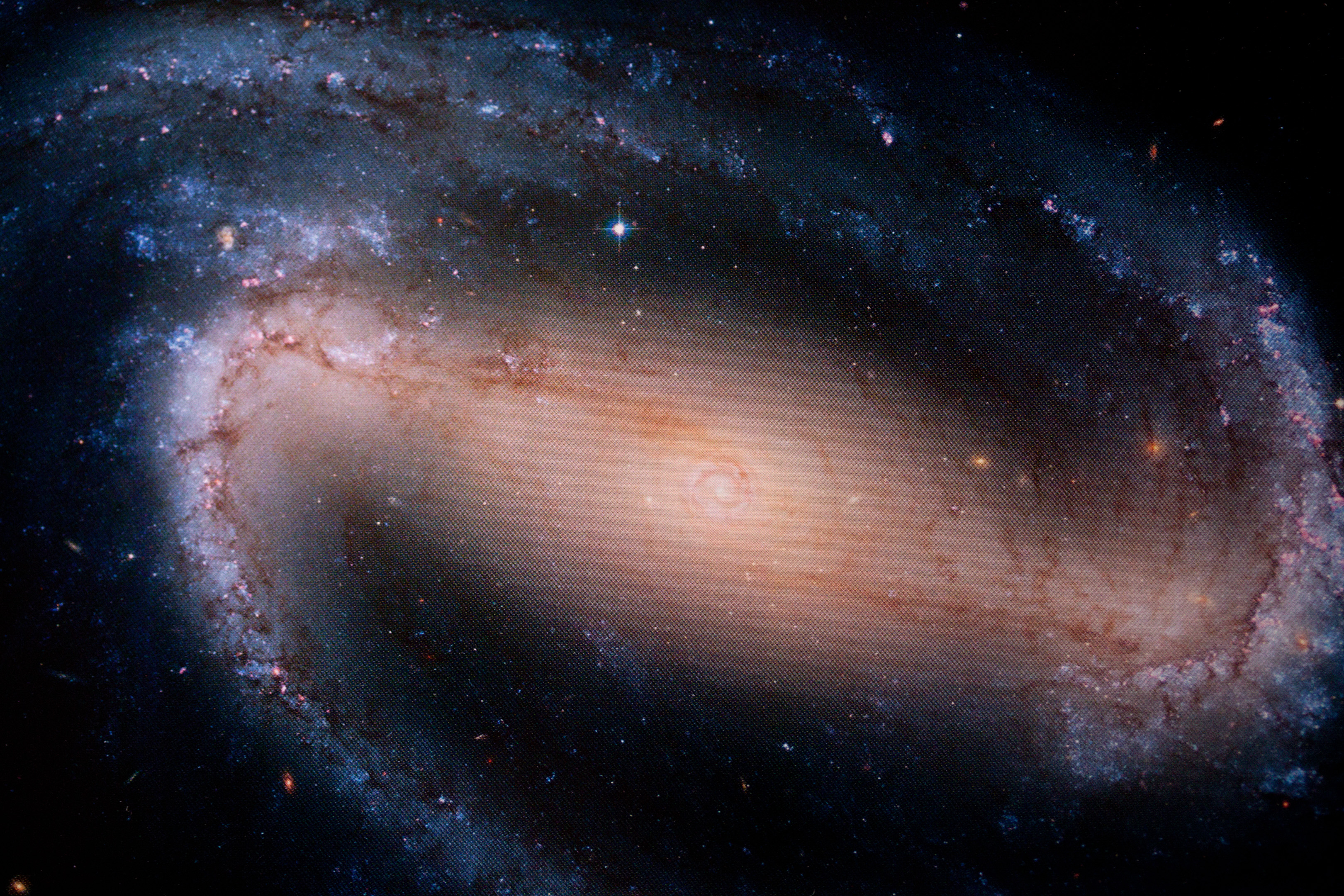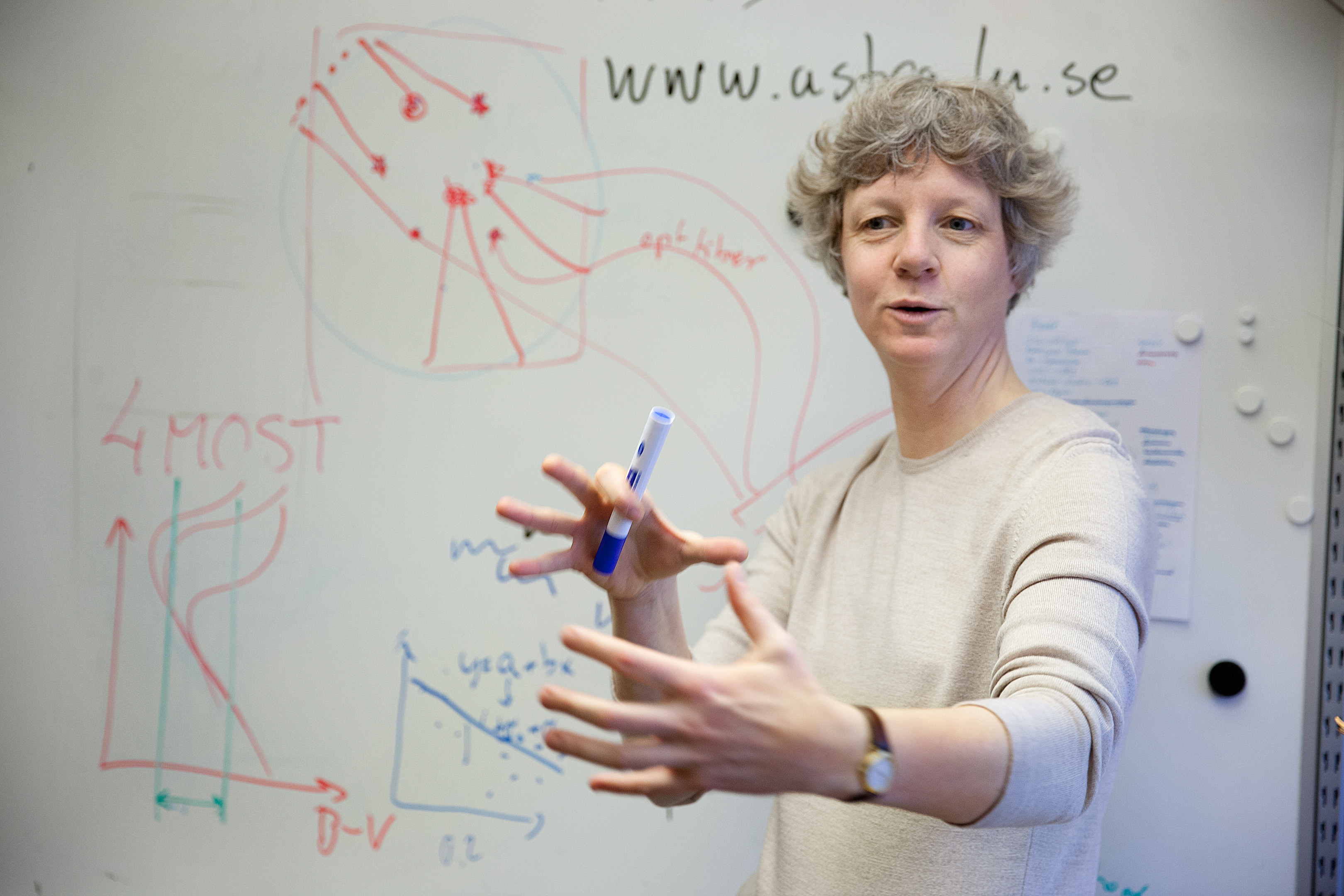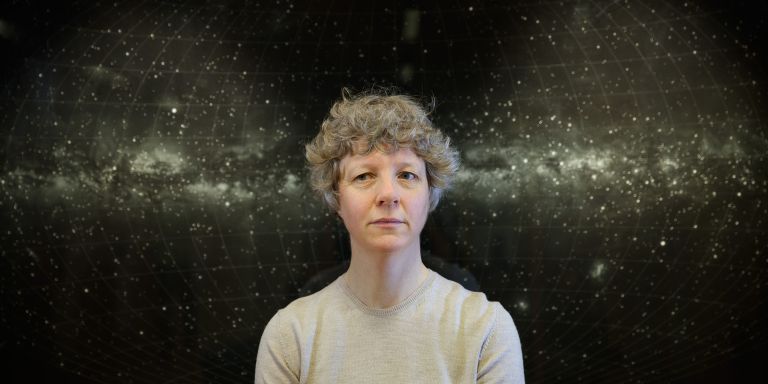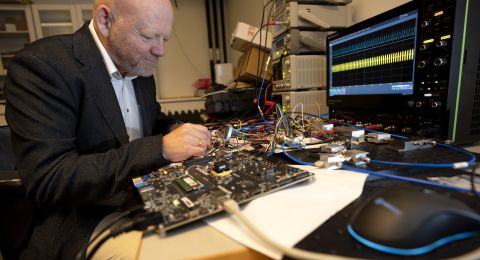
Project Grant 2013
The New Milky Way
Principal investigator:
Sofia Feltzing, Professor of Astronomy
Co-investigators:
Lund University
Lennart Lindegren
Thomas Bensby
Uppsala University
Paul Barklem
Andreas Korn
Nikolai Piskunov
Institutions:
Lund University and Uppsala University
Grant in SEK:
SEK 34 million over five years
Since the universe was young, stars have formed, lived and died. The heaviest stars end their lives as supernovas, huge explosions that cast material out into space. The material can form the basis of new stars.
“The stars we are looking at are either giant stars or dwarf stars. Primarily dwarf stars, since they do not change so much over time - we prefer extremely boring stars. The dwarf stars slowly consume their fuel, but their outer atmosphere is the same for many billions of years,” says Sofia Feltzing, Professor of Astronomy at Lund University.
The star’s atmosphere becomes like a time capsule that shows the researchers exactly what elements dominated space when the star was formed. Inside stars, new elements are formed and they are spread in space if the star ends its life in an explosion - so every new generation of stars contains a different composition of elements than the old. So it is possible to look back and see what the universe looked like several billions of years ago, and also compare the ages of different stars.
New satellite is mapping a billion stars
Sofia Feltzing enthusiastically tells about how the new European space probe Gaia, which was launched in December 2013, will “change everything” for the astronomers. Gaia will measure the distance to more than a billion heavenly bodies in the Milky Way, around 1 percent of those that exist, and will determine their positions. Today, the researchers know the exact positions of around 100,000 stars, and they are all close to the sun. At least this is how Sofia Feltzing expresses it: for astronomers 3-400 light years is “close”.
“Gaia will measure distance and movement and some elemental abundances. The probe can always measure the movement laterally; it can measure the movement in the line of sight for around 10 percent of the stars, those that are the brightest.”
It is only when the researchers know exactly where the stars are that it is really interesting to measure their composition. If two stars close to each other are different, it says something completely different than if two very remote stars are different. If two neighboring stars are different, one may have come there by another galaxy having collided with the Milky Way. Or a star has also moved quickly within the galaxy.
“It causes some problems for our observations that the stars can move somewhat fast within the discs of the Milky Way. Or perhaps, it is only one disc, we are not completely sure yet. Gaia can also teach us more about this,” says Sofia Feltzing.

More data than ever before
The grant from the Knut and Alice Wallenberg Foundation will be used in three ways. First, it will finance the collaboration between researchers in Lund and Uppsala on the analysis of data. The groups already work together, but the new funding guarantees that they can continue. Secondly, the funding will partially finance an international instrument called 4MOST, a spectrograph that analyzes the starlight’s spectrum. This shows what elements the star atmospheres contain. Thirdly, the researchers will further develop and improve methods for analysis of a large number of spectra at once.
Gaia and 4MOST will together provide larger amounts of data and more exact data than the researchers had access to ever before. When Gaia has determined the position of a star, it can be studied using the spectrograph, by directing an optic fiber so that only the light from the star is taken in. To be able to do this for millions of stars, new analysis methods and advanced statistical calculations are necessary.
Astronomic instruments have previously often been built to do something specific - but the most spectacular results have been about something that the designers could never have even imagined.
“4MOST and Gaia are not designed for a certain observation, but rather they are instruments that can be asked several questions. They provide massive amounts of data, so we have to practice at choosing and analyzing,” says Sofia Feltzing.

Our Milky Way shows how galaxies form
The goal of the whole project is to better understand the Milky Way as a galaxy, and be able to know more about how galaxies are formed and why they look the way they do. Sofia Feltzing also hopes for new collaboration between different specializations in astronomy.
“Today, we astronomers have a theory for how everything in the universe was created that explains how the galaxies are distributed in space very well. But it is not so good at explaining how individual galaxies formed and developed. In order to design better models for this, more knowledge about individual galaxies like the Milky Way is needed. Those of us who study the Milky Way also have to interact and work with researchers that make models of how stars move in galaxies. Together, we can build new knowledge that is entered into the large models of the universe - the ones that explain how everything came to be exactly like it is.”
Text Lisa Kirsebom
Translation Semantix
Photo Magnus Bergström
Photo Gaia ESA



